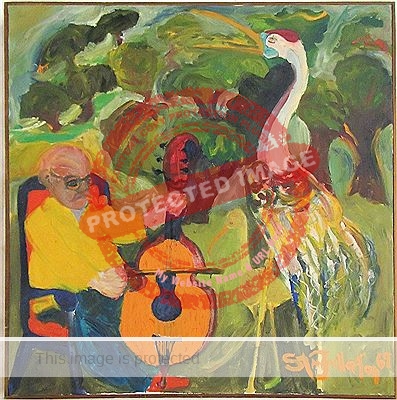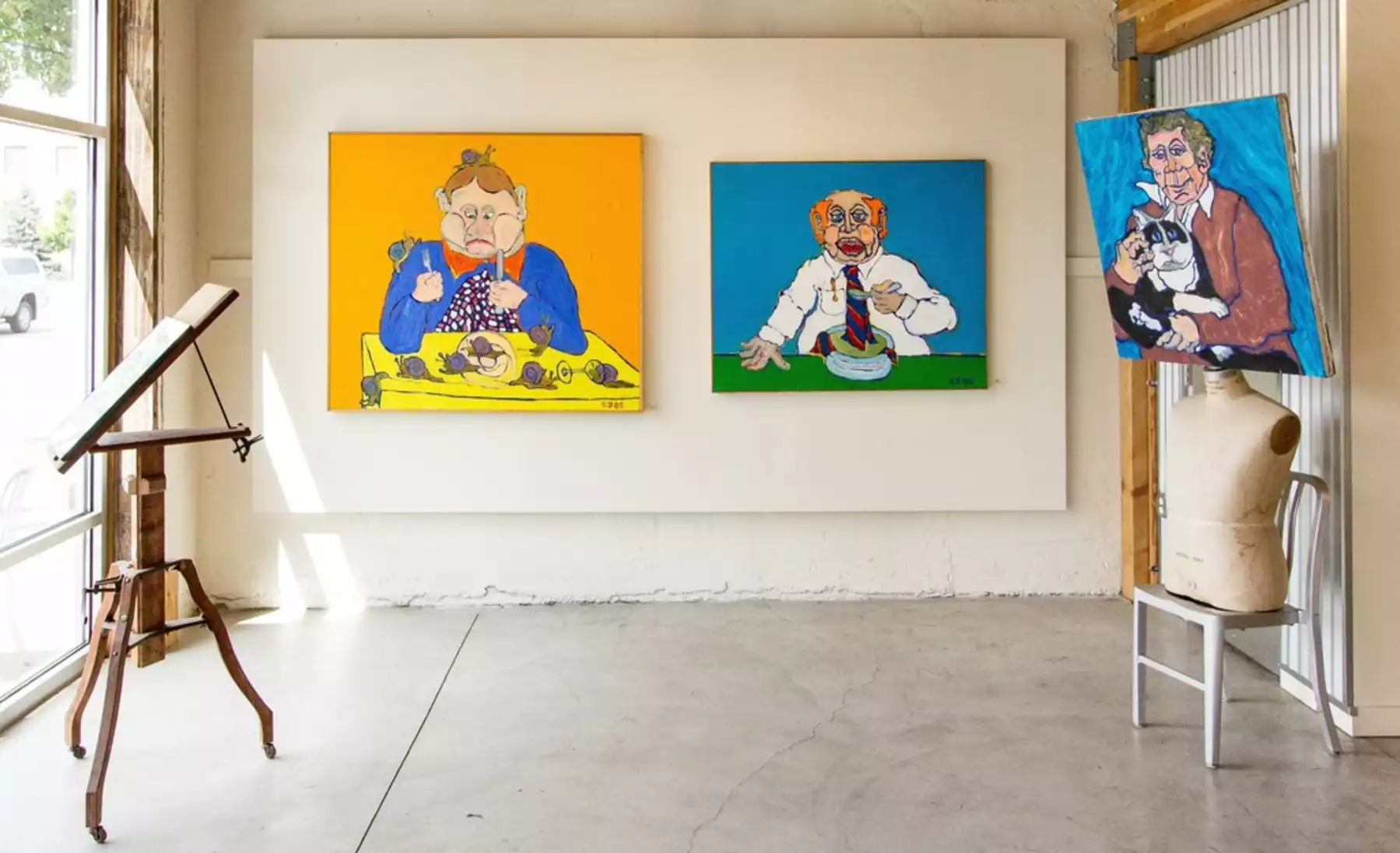Painter, print maker and sculptor Stanley (“Stan”) Fullerton (1935-2018) lived in Chapala in the early 1960s and subsequently became a successful painter in the Santa Cruz area, California.
Born in Portland, Oregon, on 19 January 1935, Fullerton had already exhibited at the City Lights Bookstore in San Francisco (one of the favorite venues of Beat era poets and artists) and held a solo show at the Telegraph Hill Gallery, in that city in 1958 before he moved to New York where he studied at the Art Students League (1959-60), became friends with George Grosz, and held solo shows at the European Gallery (1959) and the Hilda Carmel Gallery (1960).
After a short period of service in Korea and Japan with the US Marines, Fullerton spent a year or two at Lake Chapala, before settling in the Santa Cruz area of California in the mid-1960s. His wife, Gail Putney, was the first female president of San Jose State University. The couple moved to Coos Bay, Oregon, in the 1990s.

Stan Fullerton. 1969. Man Playing Cello Outdoors
According to former “Merry Prankster” Lee Quarnstrom, Fullerton “inspired both the stoic American Indian character, “Chief” Bromden, and recidivist criminal, Randle McMurphy, in Kesey’s novel, One Flew Over the Cuckoo’s Nest.”
In the words of journalist Mark Marinovich:
Fullerton’s expressionistic paintings, prints and drawings are populated by improbable characters juxtaposed in even more improbable circumstances.”
– “ “I paint human folly. I paint authority figures as fools, and fools as authority figures.” Fullerton champions self-expression, which, he asserted, is generally lacking in American art.”
Despite not liking to exhibit his art, Fullerton held several one-man shows, including exhibitions at The Cupola Gallery, Santa Cruz (1966), The Downstairs Gallery, Los Gatos (1970), Pacific Grove Art Center, Pacific Grove (1982), Bruce Velick Gallery, San Francisco (1987) and Southwestern Oregon City College, North Bend, Oregon (2016).

Exhibit of work by Stan Fullerton, 2017.
His group shows included Nova I in Berkeley, California (1969), The Great Montgrove Craft Guild, Pacific Grove (1970), 1971- 1973 The Forge in the Forest, Carmel (1971, 1972, 1973), Corn Roast, Davenport (1972), and Bruce Velick Gallery, San Francisco (1987) and Untitled 2.0 Gallery, Grants Pass, Oregon (2017).
Fullerton’s friends during his time in Chapala included guitarist Jim Byers. Byers and Fullerton were also close buddies in Santa Cruz. Fullerton was bartender at The Catalyst, where Byers—dubbed “The First King of Lompico” by one regular—often played classical guitar for tips.
Stan Fullerton had been widowed two years when he died in Coos Bay, Oregon, in 2018.
The story of El Manglar is told in chapter 34 of If Walls Could Talk: Chapala’s Historic Buildings and Their Former Occupants.
Several chapters of Foreign Footprints in Ajijic: Decades of Change in a Mexican Village explore the history of the vibrant art community of Ajijic.
Sources
- Jim Byers, personal communication, August 2015.
- Mark Marinovich. 1984. “Improbable world of Stan Fullerton.” Santa Cruz Sentinel, 30 March 1984, 68.
- Mark Marinovich. Undated. “Online Biography of Stanley Fullerton.”
- Santa Cruz Sentinel, California, 7 July 1970, 4;
- Anonymous comment dated 30 September 2015 at Hip Santa Cruz History Project.
Comments, corrections or additional material related to any of the writers and artists featured in our series of mini-bios are welcomed. Please use the comments feature at the bottom of individual posts, or email us.
Tony Burton’s books include “Lake Chapala: A Postcard History” (2022), “Foreign Footprints in Ajijic” (2022), “If Walls Could Talk: Chapala’s historic buildings and their former occupants” (2020), (available in translation as “Si Las Paredes Hablaran”), “Mexican Kaleidoscope” (2016), and “Lake Chapala Through the Ages” (2008).